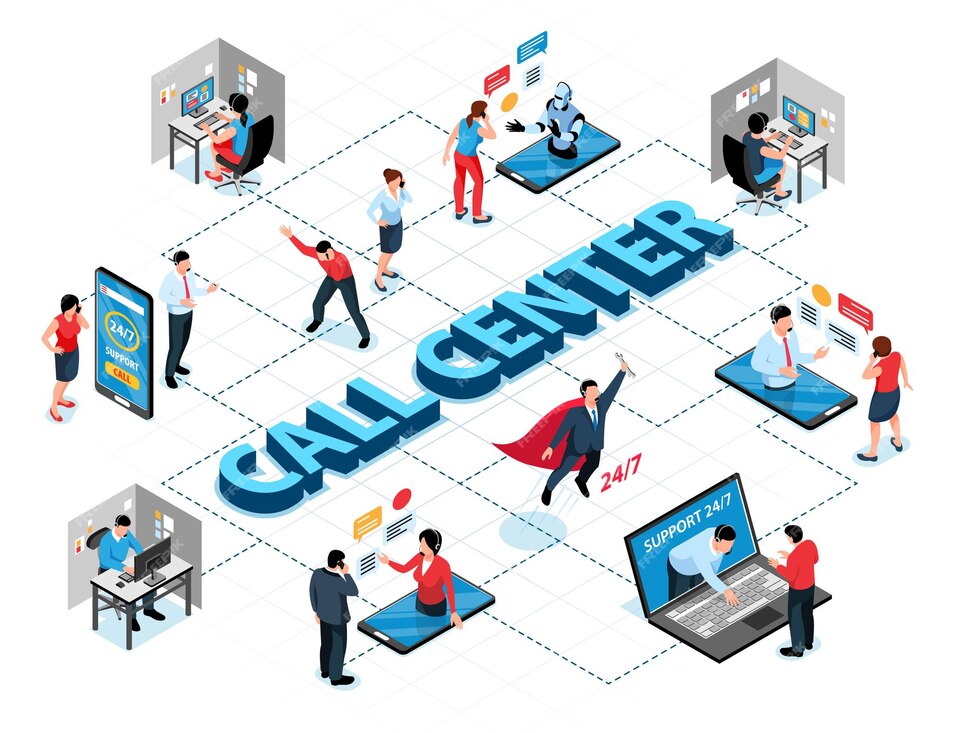Demystifying Call Center Software: How It Works
By Chloe Scott, Expert in HD Communication
Call center software lies at the heart of efficient customer service operations. Join Chloe Scott, a proficient specialist in ensuring high-definition call and video chat quality, as she demystifies the intricate workings of call center software and its role in delivering seamless communication.
Understanding Call Center Software
At its core, call center software is a suite of tools and technologies designed to manage and streamline customer interactions. It serves as the backbone of call center operations, enabling agents to handle inquiries, resolve issues, and provide support effectively.
Key Components of Call Center Software
1. Automatic Call Distributor (ACD):
ACD systems intelligently route incoming calls to the most appropriate agents based on factors like skills, availability, and IVR selections.
2. Interactive Voice Response (IVR):
IVR systems greet callers with pre-recorded messages and menu options, allowing them to navigate to the right department or agent.
3. Call Queues:
Call queues hold incoming calls in line, ensuring that customers receive assistance in the order they called or based on priority.

4. Customer Relationship Management (CRM) Integration:
CRM integration provides agents with access to customer information, history, and preferences, enabling personalized interactions.
5. Recording and Monitoring:
Call center software often includes call recording and monitoring features for quality assurance and training purposes.
6. Analytics and Reporting:
Advanced analytics tools track call metrics, agent performance, and customer satisfaction, offering valuable insights for improvements.
7. Multi-Channel Support:
Modern call center software accommodates various communication channels, including voice, chat, email, and social media, to meet diverse customer preferences.
How Call Center Software Works
- Call Routing: When a customer initiates a call, the ACD system identifies the most suitable agent or department based on predefined rules and routes the call accordingly.
- IVR Interaction: If an IVR system is in place, the customer interacts with it by selecting options or providing information, which guides the call to the right destination.
- Agent Interaction: Once the call reaches an agent, they use the CRM integration to access customer data and provide assistance. During the call, recording and monitoring features may be active to ensure quality and compliance.
- Queue Management: If all agents are busy, the call enters a queue, where it waits until the next available agent can handle it. Call center software manages the queue to ensure fair and efficient service.
- Analytics and Reporting: The software continuously collects data on call duration, wait times, agent performance, and customer satisfaction. This data is analyzed to make informed decisions and optimizations.
The Role of HD Communication
Chloe Scott emphasizes the importance of high-definition (HD) call and video chat quality within call center software. HD communication enhances the clarity and immersion of interactions, leading to better customer experiences.
Continuous Improvement
To ensure the effectiveness of call center software, regular monitoring, analysis, and optimization are essential. Performance metrics and customer feedback guide ongoing improvements, making call center software a dynamic tool in delivering exceptional customer service.
Conclusion
Call center software serves as the nerve center of customer service operations, orchestrating interactions to ensure efficiency and quality. With insights from Chloe Scott, you now have a clearer understanding of how this technology works and its pivotal role in seamless communication.
Chloe Scott, a specialist in ensuring high-definition call and video chat quality, provides valuable insights into the inner workings of call center software and its impact on customer interactions.



